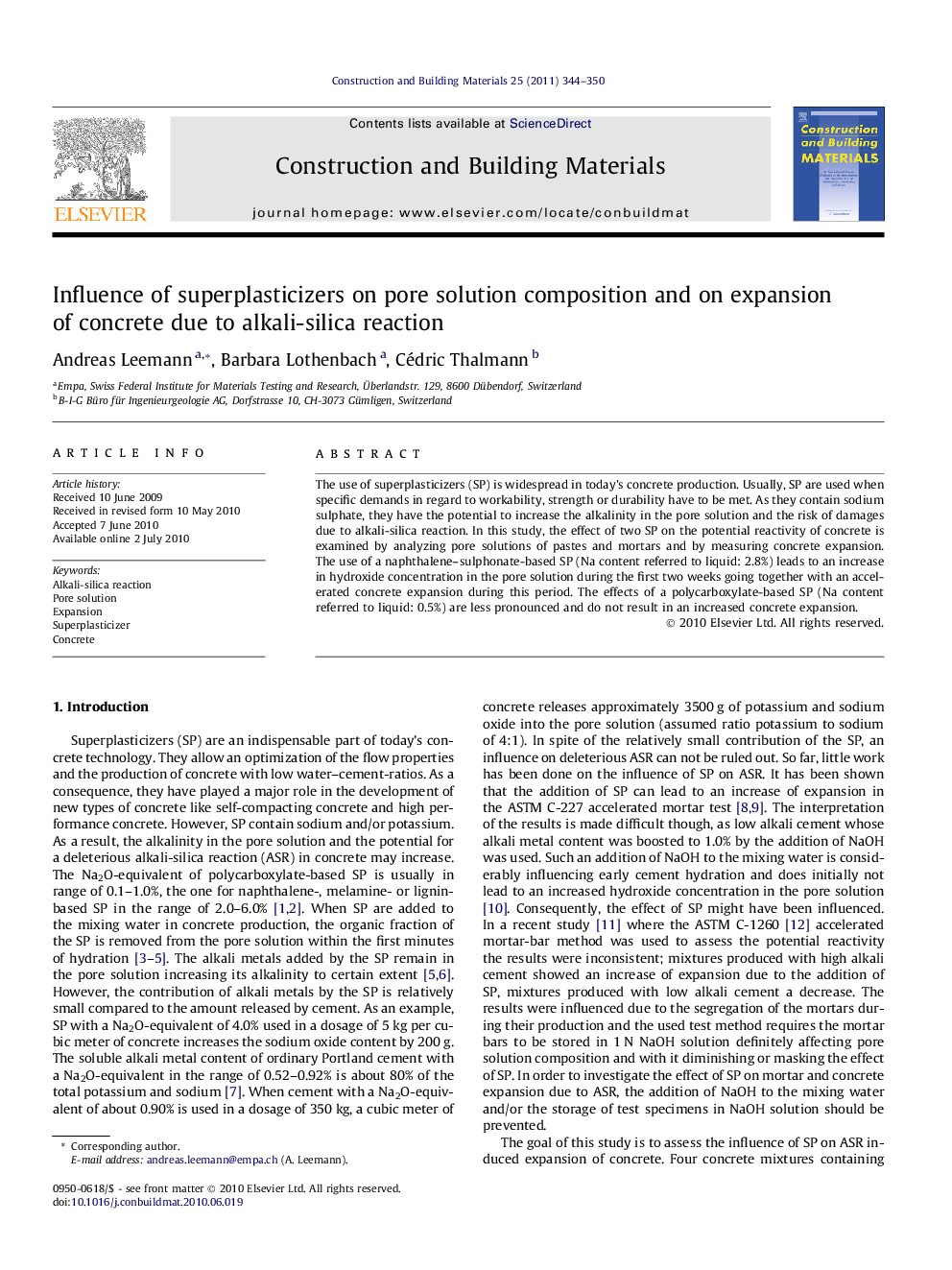| Article ID | Journal | Published Year | Pages | File Type |
|---|---|---|---|---|
| 260239 | Construction and Building Materials | 2011 | 7 Pages |
The use of superplasticizers (SP) is widespread in today’s concrete production. Usually, SP are used when specific demands in regard to workability, strength or durability have to be met. As they contain sodium sulphate, they have the potential to increase the alkalinity in the pore solution and the risk of damages due to alkali-silica reaction. In this study, the effect of two SP on the potential reactivity of concrete is examined by analyzing pore solutions of pastes and mortars and by measuring concrete expansion. The use of a naphthalene–sulphonate-based SP (Na content referred to liquid: 2.8%) leads to an increase in hydroxide concentration in the pore solution during the first two weeks going together with an accelerated concrete expansion during this period. The effects of a polycarboxylate-based SP (Na content referred to liquid: 0.5%) are less pronounced and do not result in an increased concrete expansion.
